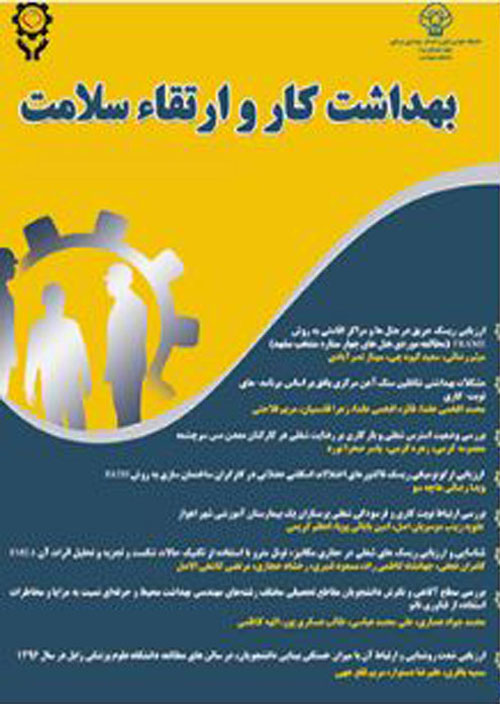Comparing Awareness about Occupational Exposure Management among Nursing, Midwifery, and Surgical Technology Students
Author(s):
Article Type:
Research/Original Article (بدون رتبه معتبر)
Abstract:
Introduction
Occupational exposure with polluted sharp equipment usually occurs during procedures such as transfusion of blood and blood products, blood sampling, disposal of needles, and collection of polluted sharp materials. Considering the fact that students have less work experience and lower practical skills, they are more vulnerable to work-related infections. The present study was conducted to determine and compare the awareness of nursing, midwifery, and surgical technology students about occupational exposure management.
Methods
This descriptive-analytical cross-sectional study was conducted on 221 students of nursing, midwifery, and surgical technology selected using the stratified random sampling in 2016. Data gathering tool was a researcher-made questionnaire including the students' demographic characteristics and awareness about occupational exposure management. Data were analyzed by SPSS18 using descriptive and analytical statistical tests.
Results
Our findings showed that the mean scores of awareness about occupational exposure management were not significantly different among the nursing, midwifery, and surgical technology students (p value = 0.435). We observed that the students' age and educational level were significantly correlated with their scores of awareness about occupational exposure management (p value < 0.001).
Conclusions
Results of the present study indicated poor awareness of the students about in-time management of occupational exposure. Measures such as educational workshops on preventive aspects in occupational exposure, observance of safety principles and comprehensive standards for accurate measurement of viral markers should be taken. Individual health profiles should be designed for each student to improve the occupational exposure managementKeywords:
Language:
Persian
Published:
Journal of ccupational Hygiene and Health Promotion, Volume:2 Issue: 3, 2018
Pages:
222 to 233
https://magiran.com/p1913011


